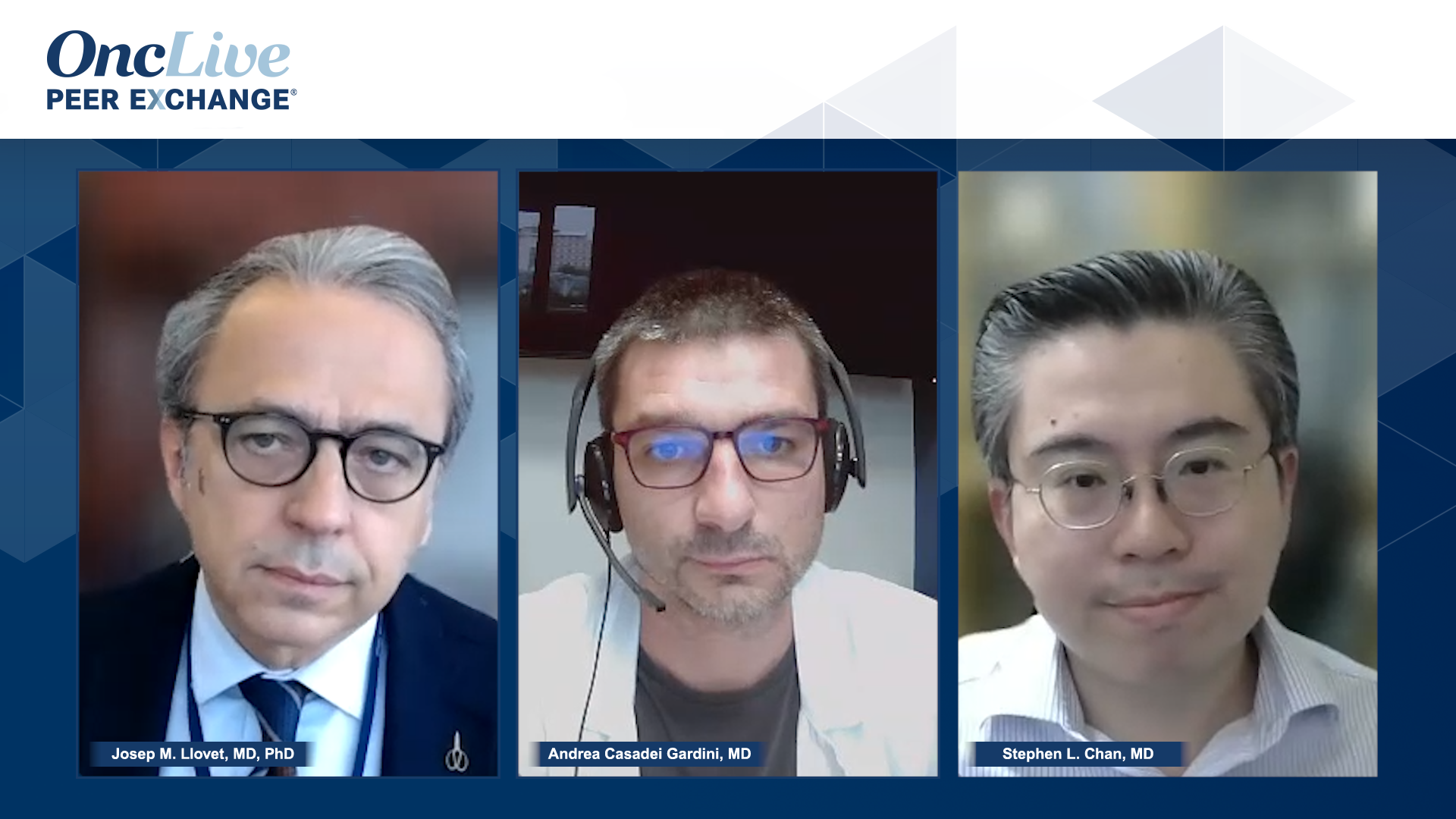- Advertise
- About OncLive
- Editorial Board
- MJH Life Sciences brands
- Contact Us
- Privacy
- Terms & Conditions
- Do Not Sell My Information
2 Clarke Drive
Suite 100
Cranbury, NJ 08512
© 2025 MJH Life Sciences™ and OncLive - Clinical Oncology News, Cancer Expert Insights. All rights reserved.
Optimizing the Selection of Frontline TKIs for Advanced HCC
Experts in gastroenterology share their approaches to first-line single-agent and combination TKI therapies for the treatment of advanced HCC.
Josep M. Llovet, MD, PhD: If you chose TKI [tyrosine kinase inhibitor] for whatever contraindications to a desert map in this patient, considering the aggressiveness of the disease—meaning segmental portal vein invasion—an infiltrative tumor is an indirect sign of aggressiveness and AFP [alpha-fetoprotein] of 9000 ng/mL. What’s your decision in terms of frontline single TKI?
Andrea Casadei Gardini, MD: I’d choose lenvatinib for this patient. Normally I prescribe a combination. I chose it because lenvatinib and sorafenib are 2 very different drugs. Lenvatinib is a response to the disease—our patient has a high alpha-fetoprotein invasion, and it filters to the liver lesion. Our response to this patient is to prolong the overall survival. The difference between the 2 TKIs is the response and the adverse events. My patients have demonstrated a tolerability to lenvatinib. There are fewer skin reactions, and we have more hypertension. I usually prescribe 5 mg of Norvasc [amlodipine] if there’s hypertension during treatment. Another problem with lenvatinib is anoxia, but we don’t have cases in our hospital [San Raffaele Research Hospital]. It has a better response and better tolerability, so in this case, I choose lenvatinib for our patient.
Josep M. Llovet, MD, PhD: This week, there was a press release for the HIMALAYA trial. The final analysis compares durvalumab-tremelimumab with sorafenib head-to-head. After several months, the analysis in the press release showed positive results for the primary end point, which is OS [overall survival] superiority. This is the first I/O [immuno-oncology]–I/O combination in HCC [hepatocellular carcinoma] that may change the landscape of management. In the decision-making process, we need the OS, progression-free survival, objective response, adverse events, and patient-reported outcomes. How does this impact frontline management?
Stephen L. Chan, MD: This study will be very important, possibly a landmark study. The HIMALAYA trial is a phase 3 trial with a robust sample size—it’s close to 1200 patients—with 3 arms. The control arm is sorafenib. One experimental arm is single-agent durvalumab, and the other experimental arm is 1 dose of tremelimumab and durvalumab. The primary objective of this study was to compare tremelimumab-durvalumab vs sorafenib. I was impressed not only with the positivity of the clinical trial and the end point but also the clinically meaningful difference.
In the press release we mentioned statistical significance and clinical meaningfulness. My interpretation of clinical meaningfulness means an improvement of OS, at least 1 to 2 months. It also suggested that they successfully demonstrated the noninferiority between the durvalumab and the sorafenib. CheckMate 459 has not demonstrated that. The key message of this study is that we have a safer and more effective I/O–I/O combination. It also suggests that single-agent I/O durvalumab may be an alternative option for sorafenib. We must read the full data, which will probably be at ESMO [European Society for Medical Oncology Congress] next year.
Josep M. Llovet, MD, PhD: Thank you.
Transcript Edited for Clarity


